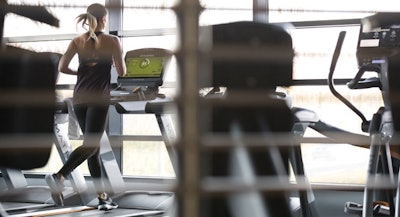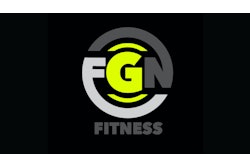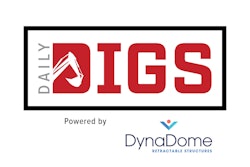
This sponsored content was provided by Matrix Fitness. What is sponsored content?
High-Intensity Interval Training, or HIIT, has become a must-have component of studio and cardio floor timetabling. HIIT is, in essence: a formula. Frenetic exertion + recovery x sets = High-Intensity Interval Training.
The benefits and suitability of HIIT as a highly effective way of getting people of all abilities fit are universally acknowledged (bear in mind that HIIT is even used for cardiac rehab patients, so it's certainly very inclusive). In fact, HIIT is now considered a global phenomenon by most trainers, coaches and trend-watchers, and the American College of Sports Medicine (ACSM) has placed HIIT at the top of its list of global trends in health and fitness.
So, HIIT has credibility and buy-in from the public. To maintain this, the identity of HIIT sessions needs to be given protected status within a facility. Not because it's elitist or aspirational, but rather because if the participants experience a session mislabeled as HIIT, then the method becomes discredited. The following are some FAQs from my book, The HIIT BIBLE, that can help to provide a clearer definition of HIIT and how it can be implemented in a way that benefits your clients seeking results.

Is HIIT just a trend or here to stay?
It's here to stay. Unlike methodologies such as core training and functional exercise, HIIT is much easier for consumers to get their heads around, mainly because the benefits seem to accurately reflect the amount of effort put into the process. Often, you find with trends in the world of fitness that people drop other activities for a while then go back to it. HIIT complements everything and competes with nothing, so it's something that can be done 52 weeks of the year as a main form of exercise or as a supplement to other styles of activity when less time is available.
How does HIIT work?
In its rawest state, HIIT is a set of numbers that relate to the level of intensity you perform at and the amount of time you work compared to the amount of time you recover before doing the work again. Formats and formulas do vary enormously. For example, Sprint 8 requires 30 seconds of maximum exertion followed by 90 seconds of recovery repeated eight times, whereas the Tabata technique rewards the participant with just 10 seconds recovery after each of the eight rounds of 20 seconds of effort.
Isn't this just for elite athletes?
In the same way that we can use various physiological markers to measure intensity, we can also use them to help you achieve your maximum potential. For example: perceived exertion. This involves asking and answering the question, "How hard am I working compared to how hard I think I could work?" This is a constantly moving goalpost, because as a beginner what you think of as your maximum effort won't be the same after a few weeks or months of regular activity. As for elite athletes, well yes, there is an element of nature involved. That said, there is also a lot of nurture, meaning that they didn't start out that good and have spent many years getting to their current level of ability. The same mindset nonetheless applies: their maximum effort is very different now from what it was during earlier stages.
Can HIIT be done every day?
No, not if done properly. HIIT damages muscle fibers and stresses the tissues within the respiratory system, which all take time to repair. Doing HIIT three times per week (as instructed with the Sprint 8 procotol) with a day in between each session is a good plan of action. The buffer/recovery day doesn't have to be a day of inactivity — you just shouldn't do exercise that challenges the muscles and system in the way HIIT does. For example, doing strength training or mobility/flexibility sessions on the "off" day is the perfect way to complement HIIT and maximize returns.
How can you leverage this knowledge about HIIT to drive results for you and your customers?
Understanding the science behind HIIT and incorporating it into educating your staff and members can be a great initial step. We have customers who've found success by incorporating "Sprint 8 Zones" on their cardio floor to hold motivating group classes, or others who've held challenges to inspire competition.
Steve Berrett is director of global group education and training at Matrix Fitness in Cottage Grove, Wis.
To learn more about solutions that can work for your facility, send us an email at [email protected] or visit matrixfitness.com/en/education/sprint-8
This article originally appeared in the July | August 2019 issue of Athletic Business with the title "HIIT Defining and Leveraging the Results-Driven Training Phenomenon." Athletic Business is a free magazine for professionals in the athletic, fitness and recreation industry. Click here to subscribe.




































